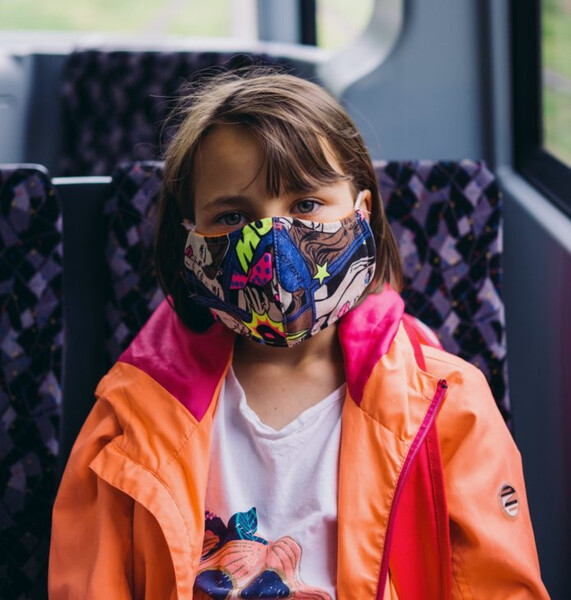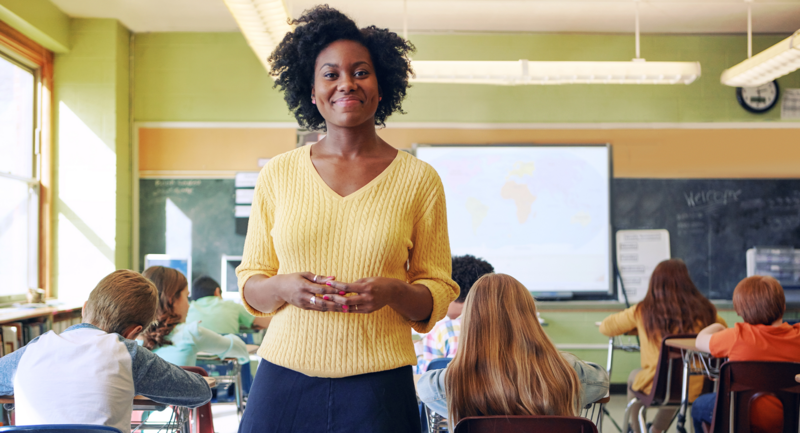The following are responses to questions that we received during our most recent webinar presentation with the U.S. Centers for Disease Control & Prevention (CDC). Due to time constraints, we were not able to answer these questions during the session. We are posting these, as they are likely useful to many schools across the U.S. and globally. Additional information and resources can be accessed via ASCD’s Coronavirus Resources and the CDC’s Coronavirus Information.
- What are different teaching models (staggered, hybrid etc.) that schools might consider to lower risk?
Schools may consider a variety of models to lower risk for students and staff. Keep in mind that the more people a student or staff member interacts with, and the longer that interaction, the higher the risk of Covid-19 spread. The risk of Covid-19 spread increases in school settings as follows:
- Lowest Risk: Students and teachers engage in virtual-only classes, activities, and events.
- More Risk: Small, in-person classes, activities, and events. Groups of students stay together and with the same teacher throughout/across school days and groups do not mix. Students remain at least 6 feet apart and do not share objects (e.g., hybrid virtual and in-person class structures, or staggered/rotated scheduling to accommodate smaller class sizes).
- Highest Risk: Full sized, in-person classes, activities, and events. Students are not spaced apart, share classroom materials or supplies, and mix between classes and activities.2. How many students and staff should be in small group or cohort?
CDC does not recommend a specific number of students in a class or specific ratios for students to staff. Rather, the number and size should be based on your specific context and situation. We suggest you try to ensure that student and staff groupings are as static as possible by having the same group of children stay with the same staff and limiting mixing between groups. Additional strategies, such as staggering drop-off and arrival times, and staggering playground times and other group activities such as art, music, and physical activity, could also be used.
3. Should schools conduct universal testing of all students before they come back to school?
We currently have guidance related to testing and schools in clearance and will share that as soon as it is posted.
4. What types of health screenings might schools consider doing daily?
If feasible, schools can consider conducting daily health checks (e.g., temperature screening and/or or symptom checking) of staff and students.
5. What should schools do if someone gets sick?
Schools may consider implementing several strategies to prepare for when someone gets sick. Some of the key points to keep in mind include:
- Be prepared to immediately separate staff and children with Covid-19 symptoms (such as fever, cough, or shortness of breath) at school. Individuals who are sick should go home or to a healthcare facility depending on how severe their symptoms are and follow CDC guidance for caring for oneself and others who are sick.
- It’s important to identify an isolation room or area to separate anyone who has Covid-19 symptoms or tests positive but does not have symptoms.
- Also, in accordance with state and local laws and regulations, school administrators should notify local health officials, staff, and families immediately of any case of Covid-19 while maintaining confidentiality in accordance with the Americans with Disabilities Act (ADA) and inform those who have had close contact with a person diagnosed with Covid-19 to stay home and self-monitor for symptoms, and follow CDC guidance if they develop symptoms.
- Close off areas used by a sick person and do not use these areas until after cleaning and disinfecting them.
- Wait at least 24 hours before cleaning and disinfecting. If 24 hours is not feasible, wait as long as possible. Ensure safe and correct use and storage of cleaning and disinfection products, including storing products securely away from children.
6. What supplies should schools consider ordering in preparation for opening?
Schools can consider ordering supplies to support healthy hygiene behaviors, including soap, hand sanitizer with at least 60 percent alcohol (for staff and older children who can safely use hand sanitizer), paper towels, tissues, disinfectant wipes, cloth face coverings (as feasible) and no-touch/foot-pedal trash cans.
7. What are some recommended safety practices for buses and other vehicles used in schools?
For bus drivers, potential sources of exposure include having close contact with a passenger with Covid-19, by contacting surfaces touched or handled by a person with Covid-19, or by touching your mouth, nose, or eyes. All frequently touched surfaces on buses and vehicles transporting students and children should be cleaned between use as much as possible, and at least daily. When possible, windows should be opened to allow for air flow and to improve ventilation. Consider spacing riders out as much as possible to increase social distancing. All drivers should also practice the same safety protocols as indicated for other staff (e.g., hand hygiene, cloth face coverings).
8. What modifications might schools make to mealtimes or food service?
Have children bring their own meals as feasible or serve individually plated meals in classrooms instead of in a communal dining hall or cafeteria. Use disposable utensils and dishes, if possible. If disposable items are not feasible or desirable, ensure that all non-disposable food service items are handled with gloves and washed with dish soap and hot water or in a dishwasher. Individuals should wash their hands after removing their gloves or after directly handling used food service items. If food is offered at any event, have pre-packaged boxes or bags for each attendee instead of a buffet or family-style meal. No matter what food service model you pursue, it is important to ensure the safety of children with food allergies.
9. During the presentation Health Education and Physical Education and Physical Activity were not highlighted. Are these being temporarily eliminated or postponed in districts?
Health Education and Physical Education and Physical Activity were not highlighted at the start of the presentation only because the focus of the webinar was focused more on trauma and development of protective factors. Covid-19 has, if anything, heightened the need for schools to focus more attention onto both areas to increase knowledge, boost health literacy and improve health (physical and mental). During the presentation the positive effects of physical activity on reducing stress and the research linking physical activity to improved mental health was cited and is recommended as long as physical distancing can be maintained.
10. How can universities that are preparing teachers contribute or help prepare student teachers to dealing with the challenges of covid-19?
Universities and teacher trainer departments can emphasize the role that developing safe, supportive learning environments play for students in general and especially for those affected by trauma. Developing relationships with all your students is key to establishing schools and classrooms where the students feel as they belong. Each student needs at least one ‘caring adult’ in order to grow and develop their own resiliency, and teachers can often be or add to this support network. Relationships are key to teaching, learning and the development of supportive learning environments.
Please join us for the July ASCD Virtual Conference to discuss strategies and solutions for the challenges educators will face in the upcoming school year. This ASCD Virtual Conference will bring together practitioners and thought leaders to share their perspectives and offer insights, tools, and strategies to help you plan for the 2020–2021 school year.This July 16–17, let’s respond, reimagine, and restart together and explore tracks including operational and budget considerations, equitable decisions on instruction, safety concerns, and preparing educators to best support students and families.
ASCD and the CDC will be conducting their next webinar on Leading Schools During the Coronavirus Crisis (July) as part of this free ASCD Virtual Conference.








